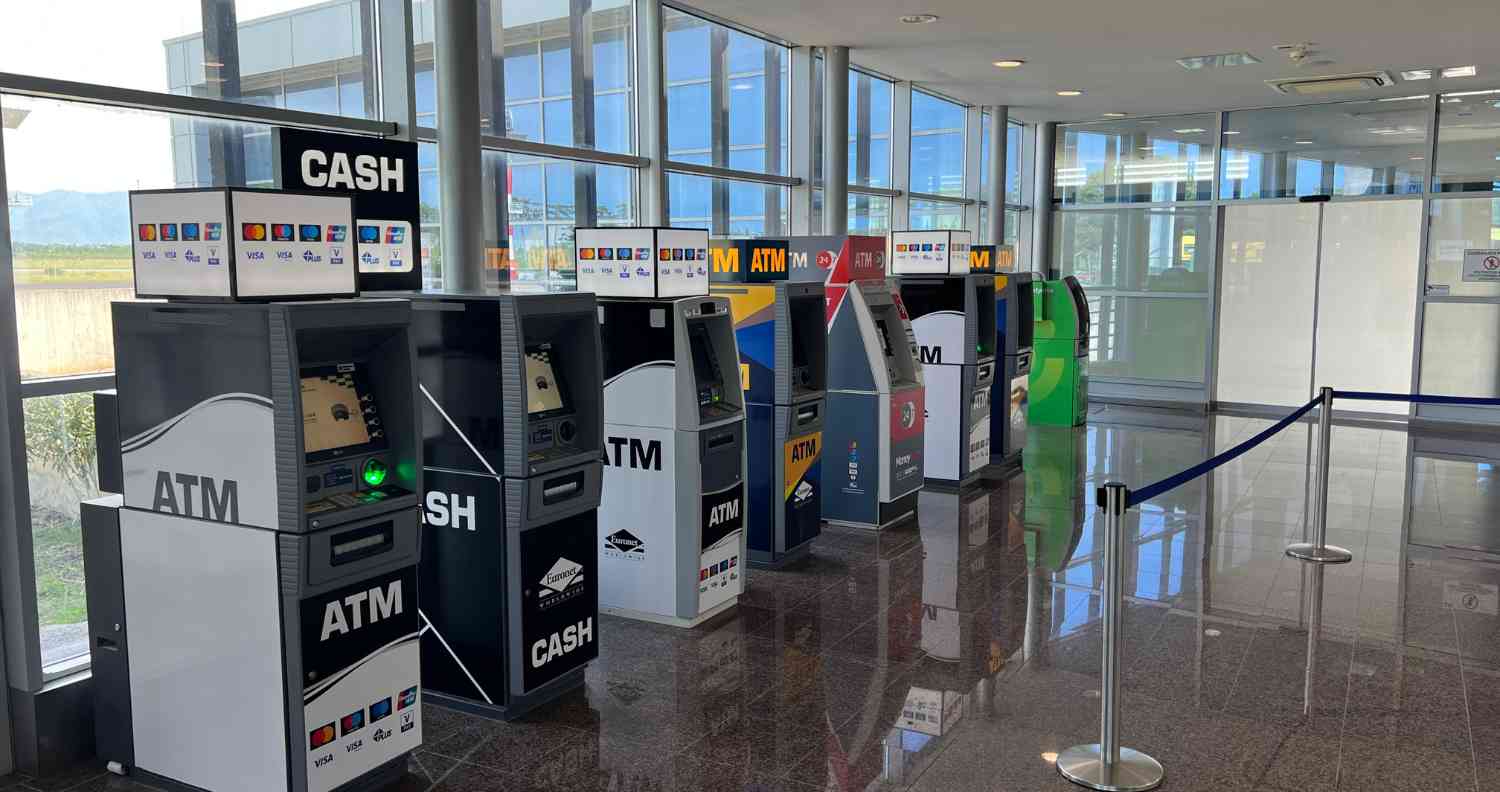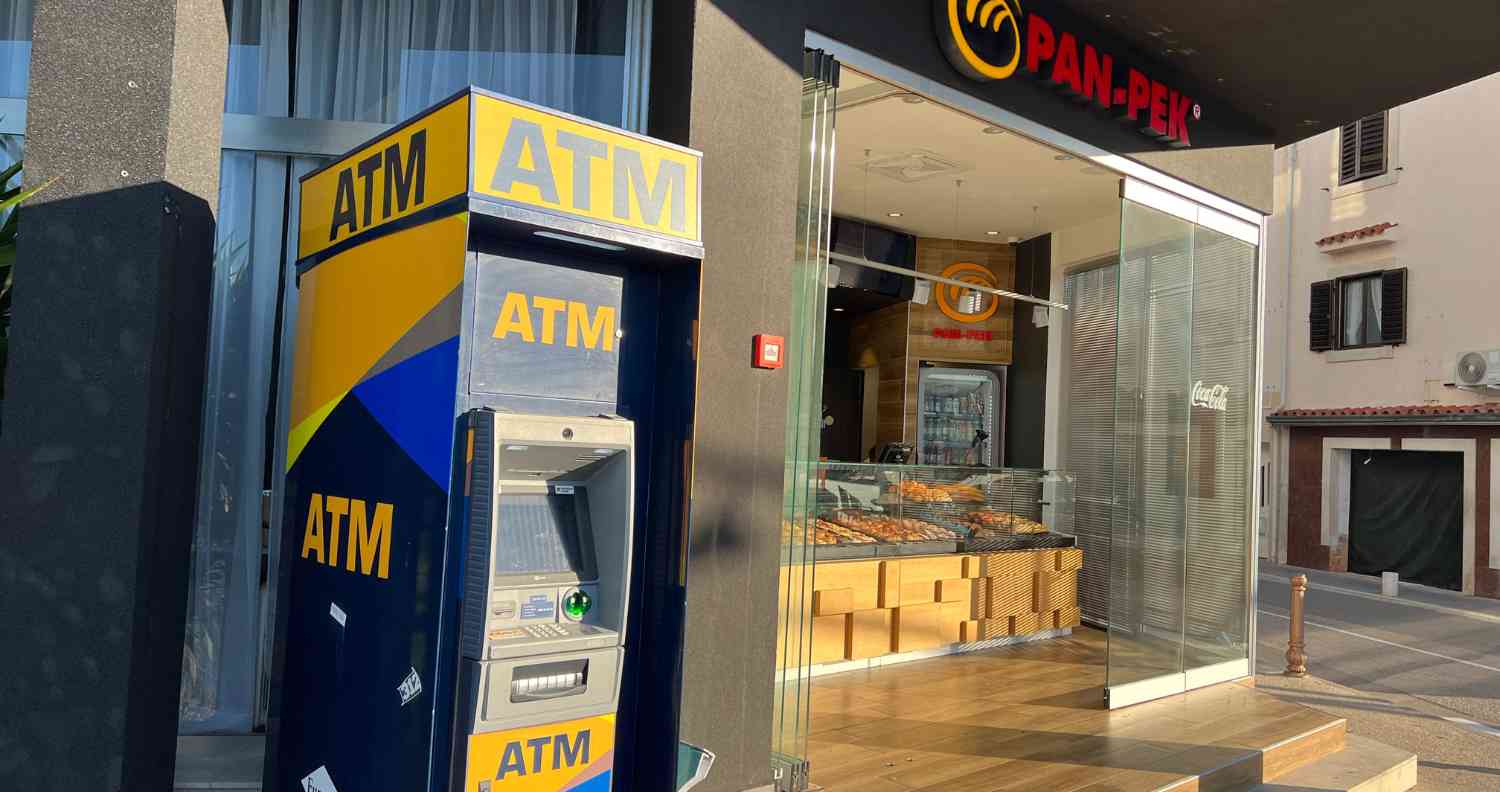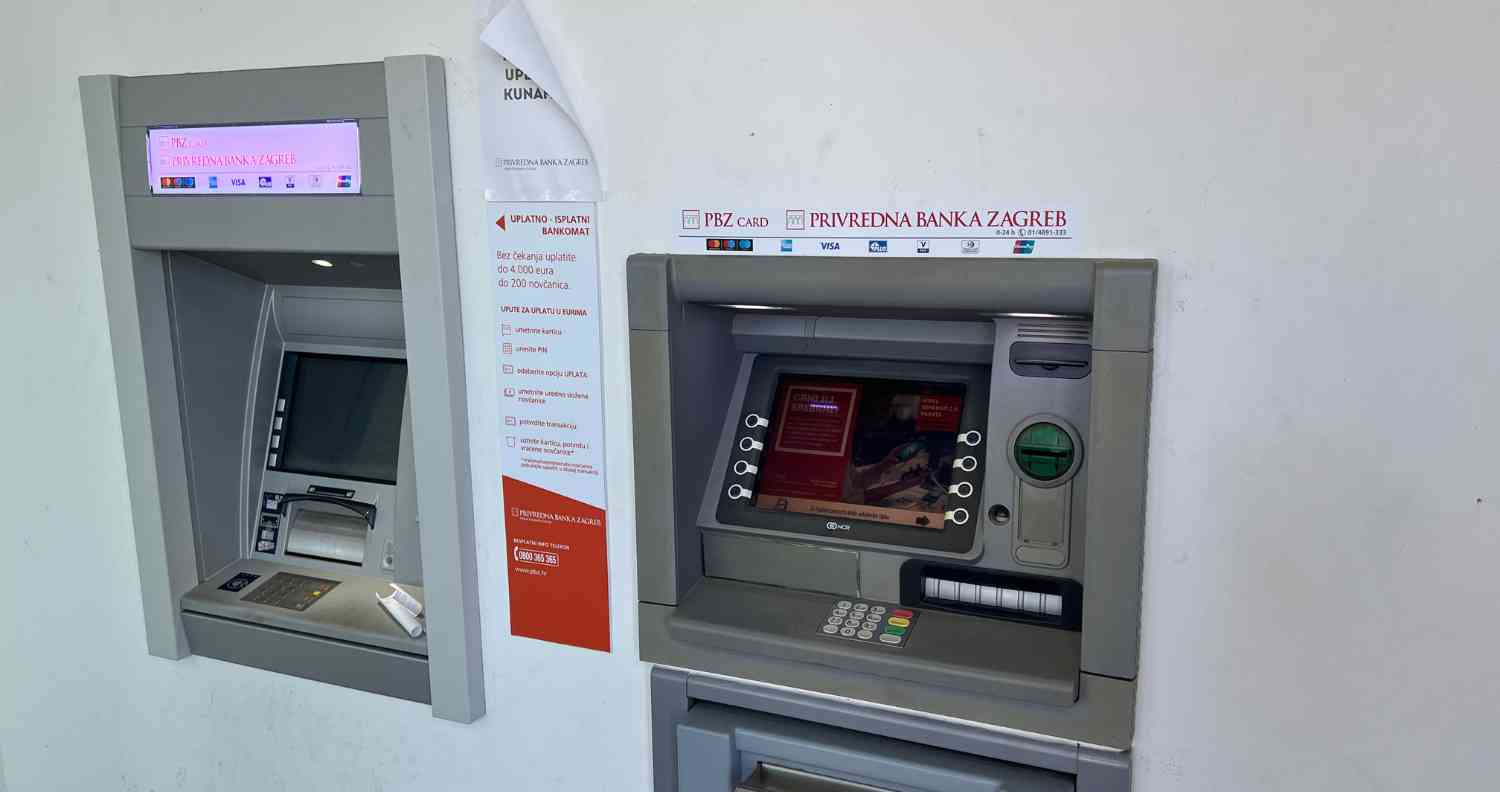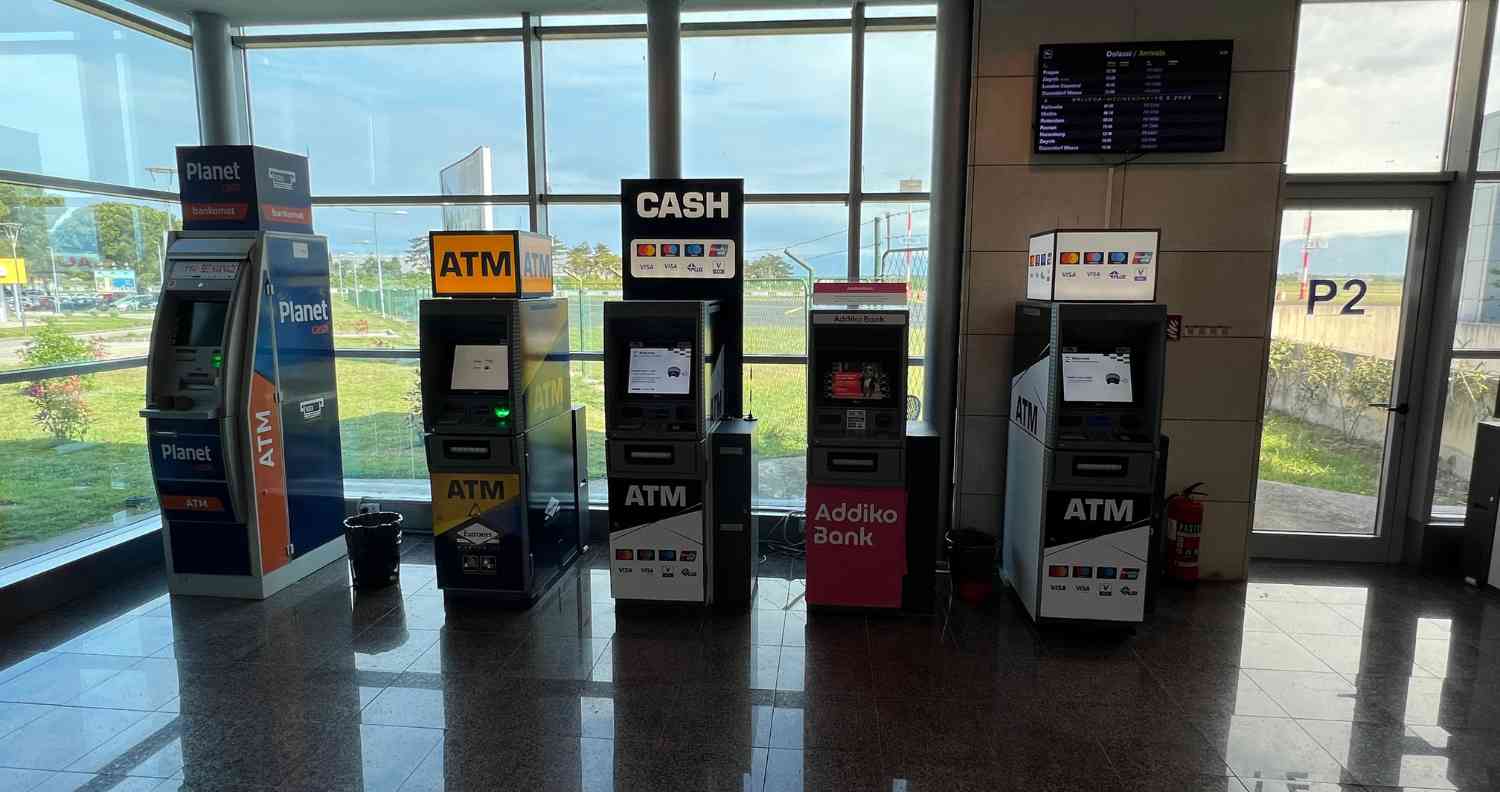Embarking on an island-hopping adventure staying in beautiful luxury apartments or high class villas in Croatia is a dream vacation for many.
While major tourist destinations like Pag Island and Zadar readily accept credit and debit cards, it's ALWAYS a good idea to carry cash when visiting smaller, more remote islands.
Croatian Currency as from 2023
Croatia has been an EU member since 2013 and adopted the Euro as its currency in January 2023. So things have changed a little bit this year and will still be a bit confusing for traders and visitors alike.
Using Money in Croatia
This using money in Croatia travel guide will provide information on ATM locations, fees, and safety tips while visiting Croatia.
Where to Find ATM Bankomat in Croatia?
ATMs or bankomat machines are widely available across Croatia, except for the smallest and most remote islands. They can be found at banks, transportation hubs, restaurants, and near grocery stores.
If you're struggling to locate one, try the following tools:
Additionally, some foreign banks operate in Croatia, such as:

Read this next: PDV in Croatia (Value Added Tax in Croatia)
Will My Credit or Debit Card Work in Croatia?
Most cards should work without any issues in Croatia, as ATMs are connected to major global networks. If your card doesn't work at a particular ATM, try another one.
To find an ATM compatible with your card's network, use these tools:
Croatian Bankomat ATM Cash Withdrawal Limits
ATM withdrawal limits vary, but most allow withdrawals of around 700 EUR per day. If you need more, you may have to make multiple withdrawals.
Inform Your Bank Before Traveling to Croatia
This is EXTREMELY IMPORTANT: Always notify your bank before traveling, especially internationally.
Otherwise, your bank may flag card activity in Croatia as fraudulent and block your card. Check with your bank about daily maximum withdrawal limits and request temporary adjustments for your trip if necessary.
Croatia ATM fees
ATM usage, especially abroad, can incur fees. However, there are ways to avoid or minimize them:
Exchange rate fees at ATMs in Croatia (DCC):
Croatian ATMs may offer to display transactions in your home currency instead of Euros.
While it may seem convenient, it allows the ATM to use its own exchange rate rather than the mid-market rate, leading to hidden fees in the form of exchange rate markups. Always choose to complete ATM transactions in the local currency.
Other fees
Croatian ATMs may charge a flat fee for non-customers of the bank that owns the ATM. Y
our home bank may also charge a flat fee or percentage as a withdrawal fee, along with foreign transaction fees for using your card abroad. Contact your bank before your trip to learn about applicable fees and watch for withdrawal fees at ATMs.
Tips for avoiding ATM fees in Croatia
While finding a fee-free ATM is unlikely, you can minimize fees by avoiding ATMs in airports and hotels, which typically target tourists with high fees.
Use a card that doesn't charge foreign transaction fees and reimburses ATM fees. Opt for less frequent, larger withdrawals to reduce one-time fees, and always complete transactions in the local currency to avoid DCC fees.

Read this next: Croatia Souvenirs: What Gifts Do I Bring Back from Croatia?
Using ATMs in Croatia
Using ATMs in Croatia is generally a simple and hassle-free process. However, it is essential to be aware of certain aspects to make the most of your experience and avoid unnecessary fees.
Here is a guide on how to use ATMs effectively in Croatia:
Locate an ATM
ATMs, or a bankomat, are widely available throughout Croatia, especially in larger cities and towns. Look for them in banks, transportation hubs, restaurants, and near grocery stores.
If you need help locating one, use ATM locator tools, such as Zagrebacka Banka ATM locator, Nearest Cash ATM locator, or Erste & Steiermärkische Bank ATM locator.
Ensure card compatibility
Croatian ATMs are connected to most major global networks, so cards from the UK and other countries should work without any issues.
If your card doesn't work at a specific ATM, try another one. Use ATM locator tools specific to your card network, such as Visa, Plus, and Plus Alliance ATM locator, Discover ATM locator, or American Express ATM locator.
Be aware of withdrawal limits
Most Croatian ATMs allow daily withdrawals of around 700 EUR. If you need more cash, you may need to make multiple withdrawals.
Inform your bank before traveling
We repeat as this is a big one! To avoid having your card blocked due to suspected fraudulent activity, notify your bank about your travel plans before leaving for Croatia. Check with your bank about daily maximum withdrawal limits and request temporary adjustments for your trip, if necessary.
Avoid unnecessary fees
Be mindful of potential fees when using ATMs in Croatia. Opt for local currency transactions instead of Dynamic Currency Conversion (DCC) to avoid hidden exchange rate markups.
Watch for withdrawal fees at the ATMs and check with your bank about any applicable fees for using your card abroad.
Minimize ATM fees
As in the above sections, limit your ATM fees by avoiding airport and hotel ATMs that often charge high fees targeting tourists. Use a card that doesn't charge foreign transaction fees and reimburses ATM fees.
Opt for less frequent, larger withdrawals to reduce one-time fees, and always complete transactions in the local currency to avoid DCC fees.
By following these tips, you can enjoy a smooth and cost-effective experience using ATMs while traveling in Croatia.
USE WITH CAUTION: Euronet Bankomat ATM Machines
In a nutshell, these machines can confuse users. Deliberately or not, we will let you guys make up your own minds on that. Our advice would be wary and use these machines with an edge of caution.
Users should exercise caution when using Euronet ATMs for several reasons:
High fees: Euronet ATMs are known to charge higher fees than regular bank ATMs. This can include withdrawal fees, transaction fees, or conversion fees, which can quickly add up when making multiple transactions.
Unfavorable exchange rates: Euronet ATMs may offer less favorable exchange rates compared to those provided by local banks or the mid-market rate. As a result, users might receive less local currency for their withdrawals.
Dynamic Currency Conversion (DCC): Euronet ATMs often offer Dynamic Currency Conversion, displaying transactions in the user's home currency instead of the local currency. While it may seem convenient, DCC allows the ATM to use its own exchange rate, potentially leading to hidden fees in the form of marked-up exchange rates.
Incomplete or misleading information: Some users have reported that Euronet ATMs do not always provide clear information on fees or exchange rates, making it difficult to determine the true cost of a transaction.
Limited withdrawal options: Euronet ATMs may impose lower withdrawal limits or only allow withdrawals in fixed amounts, which could result in users withdrawing more money than necessary and incurring additional feesTargeting tourists: Euronet ATMs are often located in tourist-heavy areas, such as airports, train stations, and popular attractions. These ATMs are more likely to charge higher fees, taking advantage of travelers who may be unfamiliar with the local currency and banking system.
To avoid these issues, it is recommended to use local bank ATMs whenever possible, as they typically offer more favorable exchange rates and lower fees. Additionally, always choose to complete transactions in the local currency and research your bank's policies on international ATM usage before traveling.

Read this next: Real Estate Croatia: A Buyers Guide
Protecting Yourself Against ATM Fraud
To protect yourself from potential ATM fraud or theft, it's essential to be vigilant and know how to spot a suspicious or tampered-with ATM. Here are some tips to help you identify potentially compromised ATMs:
Inspect the ATM: Before using an ATM, visually inspect it for any signs of tampering, such as loose or misaligned parts, broken seals, or visible adhesive residue. Pay close attention to the card slot, keypad, and any other parts where you interact with the machine.
Check the card slot: Be cautious if the card slot appears to be protruding, bulky, or if it has an additional attachment that doesn't match the ATM's design. These could be signs of a card skimmer, a device used by criminals to steal card information.
Examine the keypad: Look for any signs of tampering on the keypad, such as an overlay that feels loose, thicker than normal, or appears to be a separate piece placed on top of the original keypad. Criminals may use fake keypads to capture PIN numbers.
Look for hidden cameras: Fraudsters may install small cameras near the ATM to capture users entering their PINs. Check for any unusual holes, enclosures, or devices around the ATM screen, keypad, or in nearby structures that could be hiding a camera.
Verify the bank logo and branding: Ensure that the ATM's branding, logo, and design match the bank or financial institution it belongs to. Be cautious if the branding appears altered or missing, as it could indicate a fake ATM.
Monitor the ATM's behavior: If the ATM is slow to respond, displays error messages, or behaves unusually, it might be compromised. In such cases, cancel the transaction and use another ATM.
Trust your instincts: If something feels off or you feel uneasy about using a particular ATM, trust your instincts and find another machine.
To enhance your security, always shield the keypad while entering your PIN, use well-lit and busy ATMs, and monitor your bank account for any suspicious activity. If you suspect that an ATM has been tampered with, DO NOT USE IT, report it to the bank or financial institution responsible for the machine.

Read this next: What are The Best Clubs on Zrće Beach?
Using Money on Zrće Beach
Does Zrće Beach have ATM machines?
Yes, Zrće Beach in Novalja has ATM machines available for visitors. As a popular tourist destination, the area around Zrće Beach is equipped with facilities, including ATMs, to cater to the needs of tourists.
However, it is always a good idea to carry some cash with you, as ATMs could be more limited in number compared to larger cities or towns. Additionally, remember to be cautious of potential fees when using ATMs, especially in tourist-heavy areas.
Do the venues on Zrce beach take card payments?
Years ago they didn’t have many in Novalja but now it is a different story.
Many venues on Zrće Beach, such as bars, clubs, and restaurants, do accept card payments, as it is a popular tourist destination. However, it is essential to note that smaller establishments or more remote locations might still prefer or only accept cash payments.
If you are visiting Zrće to party holiday or for one of the big festivals, such as Hideout Festival, Austria Goes Zrće or Sonus Festival, It is always a good idea to carry some cash with you while visiting Zrće Beach to ensure you can make purchases or pay for services regardless of the available payment options.
Additionally, keep in mind that using your card abroad may incur foreign transaction fees, so it's wise to check with your bank before traveling.

Money in Croatia: Summary
Using money and ATMs in Croatia is generally straightforward, with the widespread availability of ATMs in major cities, towns, and popular tourist destinations.
However, it's essential to carry cash when visiting smaller or more remote locations, as they might not accept card payments. Croatia has adopted the Euro as its currency, making transactions and withdrawals seamless for travelers from Eurozone countries.
When using ATMs, it is crucial to be aware of potential fees, withdrawal limits, and compatibility with your card's network. Always inform your bank of your travel plans to avoid having your card blocked due to suspected fraudulent activity.
To minimize ATM fees, opt for local bank ATMs over Euronet ATMs, which are known for their high fees and unfavorable exchange rates.
Be cautious of Dynamic Currency Conversion (DCC) offered by ATMs, as it may lead to hidden fees through marked-up exchange rates.
Choose to complete transactions in the local currency instead. Additionally, use a card that doesn't charge foreign transaction fees and reimburses ATM fees whenever possible.
By following these tips and safety guidelines, you can ensure a smooth and cost-effective experience managing your finances while traveling in Croatia.
